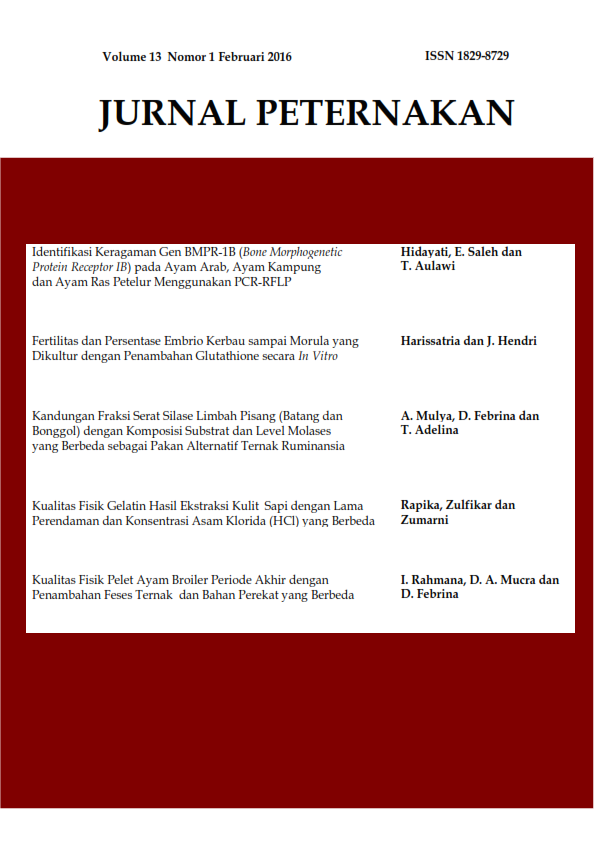FERTILITAS DAN PERSENTASE EMBRIO KERBAU SAMPAI MORULA YANG DIKULTUR DENGAN PENAMBAHAN GLUTATHIONE SECARA IN VITRO
DOI:
https://doi.org/10.24014/jupet.v13i1.2384Keywords:
culture, embryo, buffalo, glutathione, in vitroAbstract
The concentration of high fat content in buffalo embryo culture media is very influential on the increase in oxidative stress that occurs in conditions of in vitro. The occurrence of increased oxidative stress in the process of embryo culture in vitro, would result in lower percentage of embryo culture until the morula stage (32) cells. The purpose of this study was to determine the percentage of fertilized oocytes supplemented with glutathione. To know the development of the embryo until the morula stage (32) cells were cultured in the culture medium supplemented with glutathione (GSH). To determine the viability of morula stage embryo or 32 cells. The materials used in this study is ovarian buffaloes and methods used in this study is an experimental method in the laboratory. Based on these results it can be concluded that the addition of glutathione 1.5 mM in media oocyte maturation buffalo in vitro provide a significant influence on the percentage of maturation ie (P <0:01) or 62.5% and in line with the high percentage of oocytes matured in treatment increase glutathione 1.5 mM, then the percentage of oocytes were successfully fertilized also higher, namely 88.98%. Furthermore, the addition of 3 mM glutathione in embryo culture media in vitro buffalo give a significant influence on the percentage of embryo development to the morula stage or cell 32, namely (P <0.01) in, or 40.73%.
Downloads
Published
Issue
Section
License
The Authors submitting a manuscript do so on the understanding that if accepted for publication, copyright of the article shall be assigned to Jurnal Peternakan and published by Fakultas Pertanian dan Peternakan Universitas Islam Negeri Sultan Syarif Kasim Riau as publisher of the journal.
Authors who publish with this journal agree to the following terms:
Authors automatically transfer the copyright to the journal and grant the journal right of first publication with the work simultaneously licensed under a Creative Commons (CC BY) that allows others to share the work with an acknowledgement of the work's authorship and initial publication in this journal.
Authors are able to enter into separate permission for non-exclusive distribution of the journal's published version of the work (e.g., post it to an institutional repository or publish it in a book), with an acknowledgement of its initial publication in this journal.
Authors are permitted and encouraged to post their work online (e.g., in institutional repositories or on their website) prior to and during the submission process, as it can lead to productive exchanges, as well as earlier and greater citation of published work (See The Effect of Open Access).

